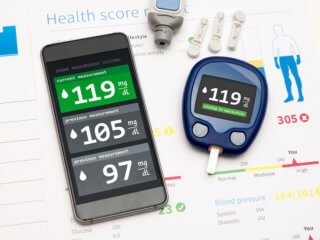The evolving face of Telemedicine
Telecommunication technology in the healthcare industry has completely transformed the paradigm of delivery of healthcare services. Now, people are getting so advanced that even for a sore throat they like to take teleconsultation before visiting the doctor. Tele-healthcare is significantly impacting on the challenges of the existing healthcare system like access to the healthcare services, cost-effective healthcare services and accessibility to the doctors and hospitals.
Evolution of Telemedicine: A brief introduction & history
Over the last two decades, technology has evolved in almost every industry including the healthcare industry. Onset advancements in the technology and the innovations in the medical field have led to the popularity of telemedicine. In this healthcare technology, there is a use of wide range of telecommunication technology for providing remote patient monitoring, teleconferencing and clinical services.
The rise of internet technology in the 1990s led to the information explosion and hence the popularity of telemedicine.
At that time, the teleradiology was accepted to send and receive images for teleconsultation. There was the use of custom hardware and software equipment for delivery of telemedicine services and only through the skilled person.
It was only for telepsychiatry consultation and was quite expensive as well.
With the advancement of technology features like communication speeds, advancement in the storage medium, security feature, application development, mobile development, cloud technology and digitizing transformation has led to the exploration of the full potential of telemedicine in 2018. Telemedicine has improved a lot in delivering the accessible and high-quality services. Patients and doctors are more proficient in using the mobile devices and standard web infrastructure to access telemedicine services.
Telemedicine is the emerging fields in the medical industry. Hence, a lot of startups are finding a bright future in telemedicine. A number of innovative telemedicine startups have emerged in the recent years. The telemedicine technology includes healthcare apps, healthcare websites/portals and wearable. It also makes use of:
- Camera of smartphone
- Digital ophthalmoscopes
- Digital stethoscopes
- Digital otoscopes
- Wearable biosensors
- Monitoring devices
| Recommended for you | |
| Hospitals are becoming networks: Telemedicine | |
| Top 10 doctor-patient platforms in India | |
| 10 Most successful mHealth apps in Africa |
Advantages of Telemedicine
- Accessibility patient care services: Telemedicine has overcome the geographical barriers. Along with this, medically underserved communities and patients from the remote areas are able to access the patient care services.
- Low healthcare cost: By providing the telemedicine services, the doctors don’t have to invest in setting up the clinics or office. They can provide their services over the phone call, text chatting or teleconferencing. For the patients, it is a cost-effective option as many of the health insurers are offering insurance cover on telemedicine. Patients also save their expenses in travelling to the clinics or visiting physicians.
- Accessibility to the remote specialists or physicians: For the patients who need to consult with the specialists or physicians who are located in the foreign countries, teleconsultation is the best option. This type of consultation is the part of telemedicine which is helpful for you to get suitable medications.
- Patient-centered approach helps in delivering better services: Telemedicine providers give the considerable time to their patients and answer their questions. They also offer medications to the patients with chronic illness as well.
Along with these, telemedicine technology has helped in providing mental health consultation services for everyone. It also improves rural healthcare around the world. The global market value of this industry is projected to grow at a CAGR of 16.76% by 2021. US, UK, Africa, Brazil and Mexico are some of the countries which have drafted policies to include telemedicine in their eHealth services. The drafted policies mainly include:
- Licensure portability for providing healthcare services through telemedicine. Removing barriers to licensure is also a part of telehealth policy.
- Licensed Hospitals have the responsibility of credentialing the telehealthcare providers
- Telehealth Advancement Act of 2011 California has eliminated the ban on On-Call delivery services
- Federal Government also drafted the telehealth reimbursement policy in which telehealth services are covered in the insurance covers.
Major players in the Telemedicine market: A global perspective
A large number of healthcare startups and providers are opting for Telemedicine around the world. Here is the list of major players in the Telemedicine market from different countries.
- American Well: This Company was founded by Drs. Ido and Roy Schoenberg in the US. It has brought telehealth programs into the market. It is also providing mobile and web technology solutions for accessing medical care services. Telehealth Kiosk, Telemed Tablet and mobile SDK are the popular products by this company.
- SnapMD: This Company was founded in 2013 to provide the cloud-based patient to provider telemedicine solutions in the US. It provides telehealth consulting services, predictive analysis and program performance & measurement.
- Chunyu: China has the highest internet penetration rate around the world. Chunyu is the leading telemedicine provider Chunyu Yisheng. It provides remote consultation with the physicians through in-app chats and phone calls.
- Telemedicine Africa: This Company was founded in 2008 by an African lady, Dr Moretlo Molefi. It provides telemedicine services and technology. It offers eHealth solutions, rapid test kits, rehydration products and training programs as well.
- Telefonica: It was started as the telecom company in Spain but entered into the global telemedicine market in Brazil. It offers remote patient management services.
- Physitrack: It is the digital healthcare company that was founded in 2012. It provides patient engagement, physical rehabilitation and home care exercise solution provider. It is based in the UK but offers its services in Netherlands, Australia, US and Canada.
- MedBit: MedBit is a Kenya based innovative digital healthcare startup. This is an app which provides the doctor and hospital booking facility for the patients in Kenya.
- Doctorsitesi: It is Turkey based digital healthcare service provider. It provides innovative, mobile-based application that allows the users to connect with the doctors online and book your appointment.
- MyTabeeb: It is the innovative telemedicine startup in Pakistan. It provides the facility to the users to provide the doctors’ data to the patients. They can find the doctors by the location and speciality.
- Practo: It is the digital health healthcare startup based in India which was incorporated in 2008. It offers a digital platform through which you can contact to doctors online and make your appointment online.
Challenges involved in Telehealth
- Credentials of the physicians: It is a critical issue to note that the genuine doctors are offering their services through telemedicine. It is difficult to recognize. There is a need to ensure that the doctors should be legally eligible for medical practice. An electronic credential is the best solution for increasing the reliability of the physicians. It streamlines the process of credentialing the physicians and reduces the paperwork as well. The online credentialing process allows the system’s hub hospital for credentialing process. It helps in reducing the number of applications and enables the physicians to work more actively.
- Lack of knowledge: The barrier of digital literacy to access the digital healthcare services is a major challenge. This prevents many people to access digital healthcare. There is a need to conduct various types of digital literacy programs to promote digital healthcare literacy. Smartphone apps like HealthiQ, and MyFitnessPal and the online community like Mayo Clinic Connect are helping in promoting digital literacy.
- Licensing of the physicians: In every state, there is some kind of law for the licensing of the physicians offering telemedicine services. It can be a problem for many doctors as there can be differences in the laws in different states even after having the clearance of the practice medicine. Telemedicine allows the cross-state consultations but the physicals have to face problem due to different medical practice start laws. Single Licensing should be done at the national level. A Telemedicine-specific license is available for several states in the US. American Telemedicine Association is working towards it to remove the obstacles to accessing telemedicine.
- Limited use by the existing patients: Telehealth allows the doctors to care for their patients remotely. However, the existing patients already have made a relationship with their doctors so it can be difficult for them to rely on the telemedicine. Doctors should make the use of telehealth for their patients. By this, doctors can have more control on their patient’s visits through simple mobile apps. Convenience and quick services are important for the patients. The barrier of limited use of telemedicine by patients can be removed if better services are offered to them.
Conclusion
Adoption of the Telemedicine has become a reality all over the globe. The flexibility and creativity of this industry have helped in overcoming the challenges. The ubiquitous smartphone, accessibility of the Internet, digital awareness and changing healthcare industry has increased the demand for the telemedicine and telehealth technology.
Improving IoT globally has helped in low-cost healthcare services, Telemedicine solutions (mobile app, wearable and healthcare devices). The global market value of this industry was 18 billion U.S. Dollars in 2015 which is expected to grow more than 40 billion dollars till 2021.
Image credit: www.istockphoto.com

















